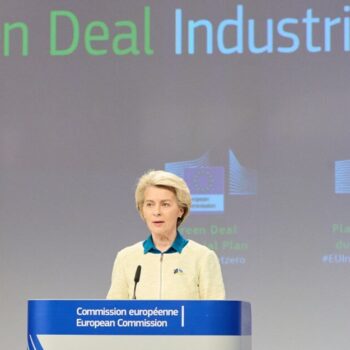The UK has made significant progress in clean energy and emissions reductions in recent years, with greenhouse gas emissions now 38 per cent below 1990 levels. But Brexit raises questions about how this progress will be continued.
In principle, it should be both possible and desirable for the UK to emerge from the Brexit process with just as strong position on climate and clean energy as before.
However, achieving this will be far from automatic. To make it happen, the UK first needs to make its intentions clear. It has to commit to maintaining a world leading position on climate change and the energy transition, with no watering down of existing commitments or policies. New policy architectures will be needed to replace existing EU arrangements. Early action also needs to be taken to avoid a damaging hiatus in investment.
The UK government’s white paper remains non-committal on what future policy will look like, saying: “We are considering all options for the UK’s future relationship with the EU on energy”.
Four big issues need to be ironed out in the negotiations and in domestic UK policy. They are trade, investment, influence and accountability.
-
Trade
Including trade in energy via interconnection will be important to keeping energy costs down. National Grid estimates doubling interconnection capacity could save £1 billion per year by 2020. It will play an even more crucial role in providing flexibility as the system decarbonises.
There is a large pipeline of interconnection projects under development, reflecting a strong economic case for increasing interconnection. But timely investment will only be forthcoming if there is sufficient stability and clarity over the trading arrangements under which the interconnectors will be used.
This is not, fundamentally, the same as the single market in goods and services: energy is a unique commodity subject to specific arrangements as part of the Internal Energy Market.
Like any other market, the energy market requires rules to ensure open and fair competition. Key questions for the Brexit negotiations include how to make sure the rules remain compatible over time, and how to enforce them when disputes arise.
-
Investment
The UK led the EU in clean energy investment last year, with over £21 billion invested in the UK economy. The vast majority of this was private money, but much was also leveraged through public financing, including European finance. What happens next is unclear. There are significant uncertainties. The UK has been the single largest recipient of energy lending from the European Investment Bank in the past five years, but future participation in the EIB is in doubt. We were also among the largest recipients of energy spending in EU funds, such as the European Fund for Strategic Investment and the Connecting Europe Facility, but there is no clarity on how these funding sources will be replaced. The Green Investment Bank has been a key enabler of clean energy investment in the UK but its future is also in doubt, not because of Brexit but as a result of its privatisation.
It will be vital to consider how to keep clean energy investment flowing, both in the face of an uncertain policy environment and the loss of public finance.
-
Influence
The UK has rightly been acknowledged as a key player in securing the Paris Climate Agreement. But it did so as part of the EU delegation.
The UK should be able to play an important global role on climate and energy through forums such as G7 and G20, and regional groupings such as the North Seas Countries Offshore Grid Initiative.
However, the UK’s diplomatic capacity on climate change has been progressively cut back, weakening its ability to influence. A renewed consideration is needed on the resources and institutions to ensure that a global Britain continues to project global influence on climate and energy.
-
Accountability
Accountability is important both for democracy and for maintaining the confidence of investors. For many years there has been a ‘belt and braces’ approach to the UK’s energy and climate framework. Commitments are part of domestic UK policy and enforceable EU regulation. Industrial emissions standards, for example, protect our health and are also a key tool underpinning the government’s laudable commitment to phase out coal power plants by 2025. Efficiency standards for products and vehicles and commitments on renewables are part of both UK policy and EU regulation.
Once EU law no longer applies, we need to consider whether the remaining UK policy belt is sufficiently tight to hold up our energy and climate policy commitments and to make sure they can’t be dropped at the whim of whoever happens to be energy.
The government’s Repeal Bill will transfer existing EU regulation into UK law. On current plans, however, standards and regulations could then be changed through secondary legislation with minimal scrutiny.
The UK has been a global leader on climate change and clean energy and, despite Brexit, it can and should continue to do so. Building new policy arrangements on trade, investment, influence and accountability may not be simple, but they will be necessary to succeed.
This blog was first published by Green Alliance

